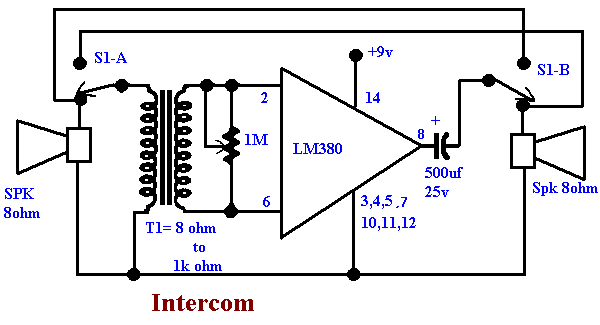
Simple Temperature Indicator

For the absolute measurement of temperatures, a thermometer is essential. However, in many situations, an absolute value is not required, and a relative indication suffices. It would be advantageous if a green light indicated that the temperature is within acceptable limits. As the temperature increases, the light should gradually change color to show that the equipment is overheating. This circuit accomplishes this task and operates directly from the mains. The indicator is a two-color LED (D1), while the sensor consists of a negative temperature coefficient (NTC) resistor (R4) and a positive temperature coefficient (PTC) resistor (R3). At relatively low temperatures, R3 has a low resistance, and R4 has a high resistance. During the positive half-cycle of the mains voltage, a voltage develops across R3/D2 that is sufficiently high to illuminate the green section of D1. The value of R3 has been selected to ensure that during the negative half-cycle of the mains voltage, the potential across it remains too low to activate the red section of D1. As temperature rises, the resistance of R4 decreases while that of R3 increases. Consequently, the green section dims progressively, while the red section brightens until only the red section is illuminated. Resistor R2 and capacitor C1 are included to limit the current drawn by the LEDs, maintaining relatively low dissipation. Both R3 and R4 should be of reasonable dimensions—approximately 6 mm in diameter, at a minimum. At 25°C, the NTC should have a resistance between 22 to 25 kΩ, and the PTC should range from 25 to 33 Ω. The circuit must be handled with care as it operates at full mains voltage.
The circuit design utilizes a two-color LED (D1) to provide a visual indication of temperature changes. The NTC and PTC resistors (R4 and R3) are critical components that respond to temperature variations. The NTC resistor decreases in resistance as temperature increases, while the PTC resistor increases in resistance under the same conditions. This complementary behavior allows for a gradual transition in the LED's color from green to red, effectively communicating the thermal status of the equipment.
The LED indicator is powered directly from the mains supply, which necessitates careful design considerations to ensure safety and reliability. The circuit employs a diode (D2) in conjunction with R3 to rectify the AC mains voltage, allowing for appropriate biasing of the LED. The resistor R2 plays a vital role in current limiting, preventing excessive current flow that could damage the LED or other components.
Capacitor C1 serves to stabilize the voltage across the LED, smoothing out fluctuations that may occur due to mains voltage variations. The choice of component values for R3 and R4 is essential for achieving the desired temperature sensitivity and response time. The recommended dimensions for these resistors ensure they can handle the thermal load without failure.
Overall, this circuit is designed for applications where monitoring temperature is critical, and an intuitive visual alert system is required. It combines effective temperature sensing with a straightforward LED indication, making it suitable for various environments where overheating could pose a risk. Proper assembly and adherence to safety standards are imperative, given the direct connection to mains voltage. For the absolute measurement of temperatures, a thermometer is indispensable. However, in many situations, an absolute value is not needed and a relative indication is sufficient. It would be a further advantage if a green light would indicate that all is well as far as temperature is concerned. As the temperature rises, the light should change color slowly to indicate that the equipment is getting too hot.
This circuit does this and works directly from the mains. The indicator proper is a two-color LED (Dl), while the sensor is a combination of a negative-tempeniture coefficient (NTC) and a positive-temperature coefficient (PTC) resistor (R4 and R3, respectively). At a relatively low temperature, the value of R3 is low and that of i4 is high. During the positive half cycle of the mains voltage, a voltage will exist across R3/D2 that is sufficiently high to cause the green section of Dl to light.
The value of i3 has been chosen to ensure that during the negative half cycle of the mains voltage, the potential across it is too low to cause the red section of Dl to light. If the temperature rises, the value of i4 diminishes and that of i3 rises. Slowly, but surely, the green section will light with lesser and lesser brightness. At the same time, the red section lights with greater and greater brightness until ultimately only the red section will light.
Resistor R2 and capacitor CI ensure that the current drawn by the LEDs does not become too large. This arrangement keeps the dissipation relatively low. Both R3 and R4 should be of reasonable dimensions—approximately 6 mm in diameter, not less. At 25°C, the NTC must be 22 to 25 kfl and the PTC must be 25 to 33 . The circuit should be treated with great care because it carries the full mains voltage. 🔗 External reference
The circuit design utilizes a two-color LED (D1) to provide a visual indication of temperature changes. The NTC and PTC resistors (R4 and R3) are critical components that respond to temperature variations. The NTC resistor decreases in resistance as temperature increases, while the PTC resistor increases in resistance under the same conditions. This complementary behavior allows for a gradual transition in the LED's color from green to red, effectively communicating the thermal status of the equipment.
The LED indicator is powered directly from the mains supply, which necessitates careful design considerations to ensure safety and reliability. The circuit employs a diode (D2) in conjunction with R3 to rectify the AC mains voltage, allowing for appropriate biasing of the LED. The resistor R2 plays a vital role in current limiting, preventing excessive current flow that could damage the LED or other components.
Capacitor C1 serves to stabilize the voltage across the LED, smoothing out fluctuations that may occur due to mains voltage variations. The choice of component values for R3 and R4 is essential for achieving the desired temperature sensitivity and response time. The recommended dimensions for these resistors ensure they can handle the thermal load without failure.
Overall, this circuit is designed for applications where monitoring temperature is critical, and an intuitive visual alert system is required. It combines effective temperature sensing with a straightforward LED indication, making it suitable for various environments where overheating could pose a risk. Proper assembly and adherence to safety standards are imperative, given the direct connection to mains voltage. For the absolute measurement of temperatures, a thermometer is indispensable. However, in many situations, an absolute value is not needed and a relative indication is sufficient. It would be a further advantage if a green light would indicate that all is well as far as temperature is concerned. As the temperature rises, the light should change color slowly to indicate that the equipment is getting too hot.
This circuit does this and works directly from the mains. The indicator proper is a two-color LED (Dl), while the sensor is a combination of a negative-tempeniture coefficient (NTC) and a positive-temperature coefficient (PTC) resistor (R4 and R3, respectively). At a relatively low temperature, the value of R3 is low and that of i4 is high. During the positive half cycle of the mains voltage, a voltage will exist across R3/D2 that is sufficiently high to cause the green section of Dl to light.
The value of i3 has been chosen to ensure that during the negative half cycle of the mains voltage, the potential across it is too low to cause the red section of Dl to light. If the temperature rises, the value of i4 diminishes and that of i3 rises. Slowly, but surely, the green section will light with lesser and lesser brightness. At the same time, the red section lights with greater and greater brightness until ultimately only the red section will light.
Resistor R2 and capacitor CI ensure that the current drawn by the LEDs does not become too large. This arrangement keeps the dissipation relatively low. Both R3 and R4 should be of reasonable dimensions—approximately 6 mm in diameter, not less. At 25°C, the NTC must be 22 to 25 kfl and the PTC must be 25 to 33 . The circuit should be treated with great care because it carries the full mains voltage. 🔗 External reference





